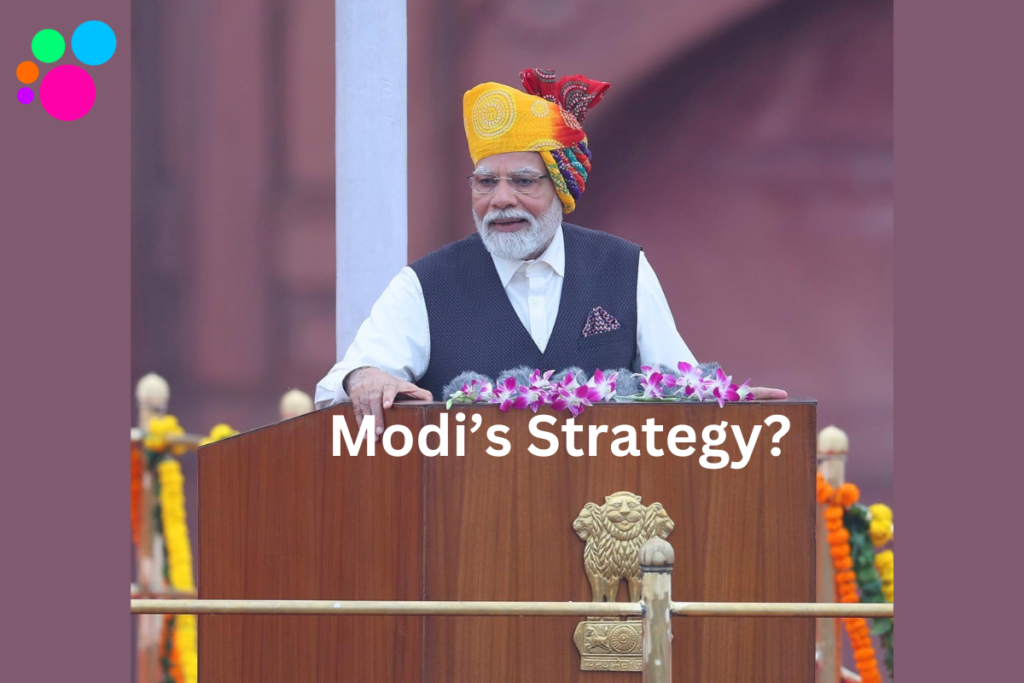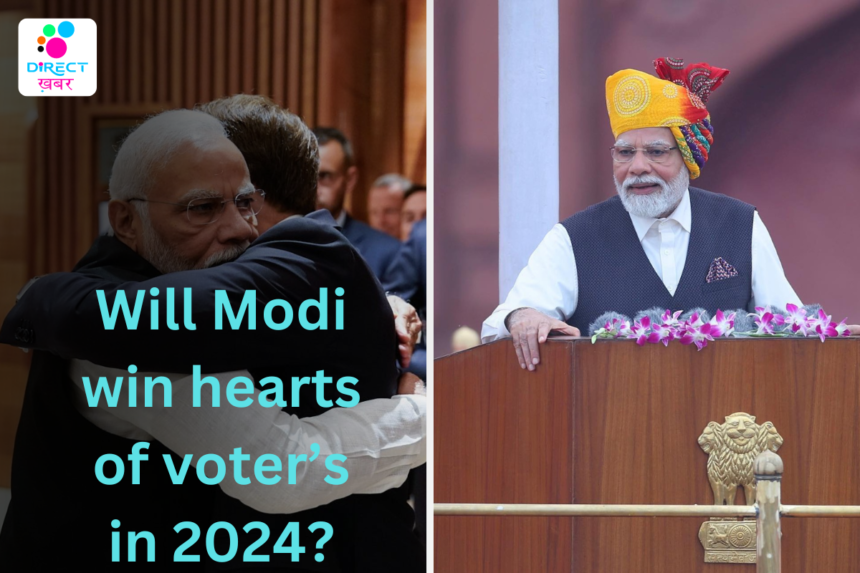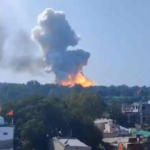In a bold and confident move, Prime Minister Narendra Modi has set the stage for the upcoming Lok Sabha elections by expressing his belief that the Bharatiya Janata Party (BJP) will secure an impressive 370 seats, while the National Democratic Alliance (NDA) could surpass the 400-seat mark. This assertion, if realized, would mark a landslide victory for the ruling party and further solidify Modi’s position as a dominant force in Indian politics.
People’s Mood and the BJP’s Campaign Strategy
During his address in the Lok Sabha, Modi emphasized that the prevailing mood among the electorate favors the BJP, attributing it to the party’s campaign song for 2024, which conveys the message, ‘Tabhi toh sab Modi ko chunte hain’ (the only choice for the people is Modi). This strategic messaging underscores the Prime Minister’s confidence in the party’s ability to resonate with the masses and secure a resounding mandate in the upcoming elections.
Jai Jawan Jai Kisan Jai Vigyan Jai Anusandhan
PM Modi
Predictions on Congress’s Fate and Opposition Alliances
Modi did not shy away from predicting a grim future for the Congress, stating that they would soon find themselves relegated to the ‘visitor’s gallery’ of Parliament. This forecast aligns with recent comments from Trinamool Congress (TMC) leader Mamata Banerjee, who suggested that the Congress would struggle to secure even 40 seats in the upcoming elections.
The Prime Minister also alluded to the challenges within the Indian National Developmental Inclusive Alliance (INDIA), highlighting the lack of trust among opposition parties. Modi pointed to instances such as Nitish Kumar’s exit from the opposition camp to join the NDA and the refusal of Mamata Banerjee and Arvind Kejriwal’s Aam Aadmi Party (AAP) to form an alliance in Punjab. These developments
underscored the strains in the opposition’s unity, with Modi coining the phrase “Alliance ka alignment bigad gaya hai” to emphasize the disarray.
Congress’s Internal Challenges and BJP’s Strategic Moves
Modi’s speech also shed light on the purported internal challenges within the Congress party. According to him, some Congress leaders had lost the will to contest the upcoming elections, and there were indications that certain Lok Sabha MPs within the party were considering the Rajya Sabha route. In contrast, Modi suggested that the BJP might field some outgoing Rajya Sabha MPs in the Lok Sabha elections, demonstrating the party’s proactive approach and strategic planning.
The Modi Factor: Building on Past Successes
The BJP’s confidence in surpassing its previous electoral performance, as expressed by Modi’s target of 370 seats, is rooted in what is commonly referred to as the “Modi factor.” The Prime Minister believes that his government has successfully delivered on major promises, including the abrogation of Article 370 in Jammu and Kashmir and the construction of the Ram Temple in Ayodhya. These accomplishments, coupled with a focus on Hindutva, nationalism, and welfare measures for the poor, form the bedrock of the BJP’s electoral strategy.

Modi has consistently urged his party leaders to emphasize the benefits of a strong and stable government, citing this as the key factor enabling his administration to enact significant measures. The successes of the G-20 Presidency, Chandrayaan-3, and the country’s growing global stature, in Modi’s view, position him as the natural choice for leadership in the eyes of the electorate.
Economic Outlook and the Non-Populist Budget
The Prime Minister’s confidence is further evident in the economic outlook presented by his government. The recently unveiled non-populist interim budget reflects the belief that a booming economy, coupled with low inflation, is a recipe for electoral success. Modi’s assessment aligns with the idea that a stable economic backdrop resonates positively with voters, creating a conducive environment for the ruling party.
Challenges and Opportunities: Navigating Two Major Wars and a Pandemic
In positioning himself as the candidate of choice, Modi acknowledges the challenges faced by the nation, including two major wars globally and the ongoing impact of the pandemic. However, his pitch revolves around the idea that a strong and stable government is crucial in steering India through these turbulent times.
Conclusion: Modi’s Vision for India’s Future
As the political landscape evolves, Prime Minister Narendra Modi’s bold predictions and confident assertions set the stage for a highly anticipated Lok Sabha election. The BJP’s campaign strategy, rooted in past successes and a vision for a strong and stable government, will likely shape the narrative in the lead-up to the polls. Whether Modi’s forecast of crossing the 370-seat mark materializes or not, his influence on the political landscape remains undeniable, making the upcoming elections a critical juncture in India’s political trajectory.






